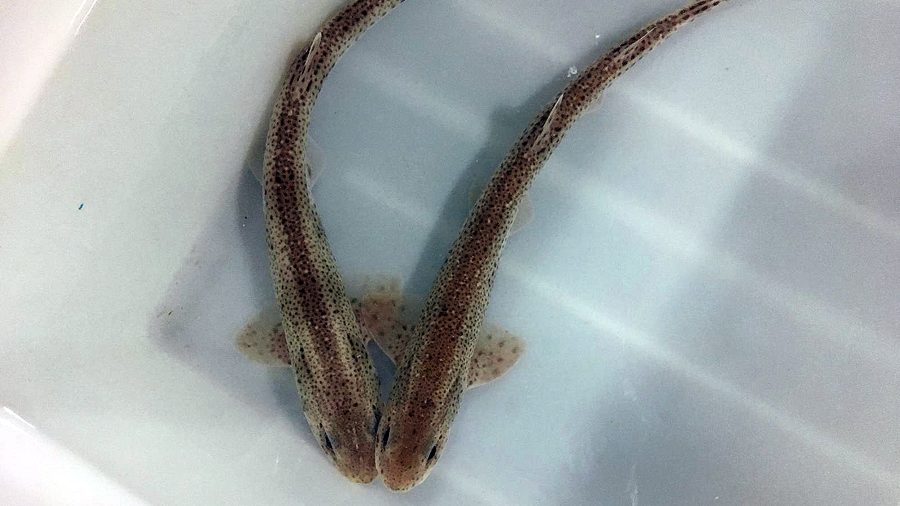Researchers of the UAB have shown that sex hormones accumulate in the skin of sharks. This finding opens a new way for the evaluation of their reproductive status by the biopsy of a sample that can be taken remotely in their own environment. In the study, researchers are committed to further use this new method, as it is less invasive than others that require greater manipulation or the capture of the animals.

The study was carried out by Annaïs Carbajal and Manel López Béjar, researchers at the Department of Animal Health and Anatomy of the UAB, and is published in the journal Animals.
The scientists developed the technique for extracting and analysing hormones from skin samples by using an enzyme immunoassay technique that is already commercially available. They were able to determine the levels of sex hormones (progesterone, oestradiol and testosterone) in different stages of maturity and phases of the reproductive cycle of male and female specimens of the catshark species (Scyliorhinus canicula).
Currently, more than one third of chondrichthyan fish species, such as sharks and rays, are threatened according to the International Union for Conservation of Nature (IUCN) Red List.Therefore, collecting data on their biology, behaviour and life history is relevant to their conservation and management. Traditional analyses of plasma samples provide essential information on the reproductive activities of chondrichthyans, but their collection, as well as other non-lethal methods such as endoscopy and ultrasound, involve considerable handling of the animals.
"Skin biopsy is a very promising technique as an alternative method with which to obtain reliable biological reproductive data in free-ranging sharks", says Manel López-Béjar. "It is also in line with the growing emphasis on compliance with more ethical principles in wildlife research, which advocate for non-destructive or minimally invasive sampling techniques collected remotely", adds the researcher.
The skin biopsy can be obtained in the animals' own environment with the help of a pole attached to a remote sampling tip that can penetrate the sharks' thick skin. This technique is already being used to obtain data on genetics, diet or the impact of pollution.
"More detailed data will now be needed, for example to improve our understanding of the temporal patterns of shark reproduction, or the effects of pollution on reproductive health. And we must validate the tool among different chondrichthyan species, given the diversity of maternal-fetal breeding and nutrition strategies they have, which makes it difficult to generalise about the hormonal regulation of their reproduction", adds Annaïs Carbajal.
The proposed method could also benefit other aspects of research, such as the impact of stress on chondrichthyan reproduction and the underlying mechanisms, which remain unclear.
"A better understanding of reproductive information will provide valuable information on the demography and viability of the populations, which are essential to formulate effective conservation and management strategies with a scientific basis", conclude the researchers.
The research was carried out in the laboratories of the UAB Faculty of Veterinary Medicine with samples obtained from commercial catches. Researchers from the Aletea Association, the Oceanogràfic València Foundation, and the Cardenal Herrera-CEU University also participated in the study.
Reference: Carbajal, A.; Lobato, I.G.; Agustí, C.; Muñoz-Baquero, M.; Serres-Corral, P.; López-Béjar, M. A New Research Tool for Use in Sharks and Rays: Relevance of Reproductive Hormone Levels in the Skin of Small-Spotted Catshark (Scyliorhinus canicula). Animals 2025, 15, 762. https://doi.org/10.3390/ani15050762






